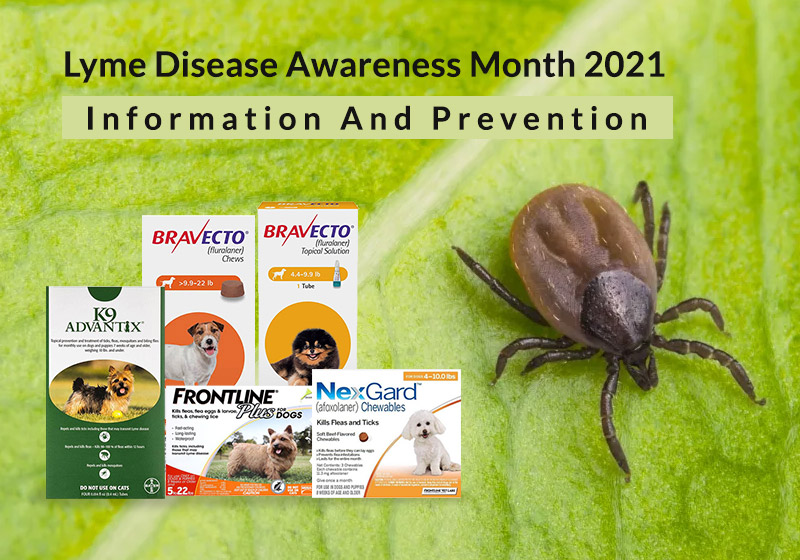It’s a good time to talk about ticks and tick-borne diseases as we transition from winter to spring and summer, particularly because May is Lyme Disease Awareness Month. Ticks are transitioning from their winter dormancy, concealed in the leafy debris, to their active feeding period as the weather warms up and we spend more time outside.

Deer ticks aka black-legged ticks become active once the temperature reaches 4°C (39°F), and they remain active in the spring, summer, and fall seasons, as well as on warm winter days. Lyme disease is a tick-borne disease that causes debilitating lameness in dogs. Deer ticks carry the bacteria (Borreliaburgdorferi) that causes it.
Lyme disease is transmitted to dogs by a deer tick bite. The bacteria that causes Lyme disease is transmitted in the body by the bloodstream and most often settles in the joints and kidneys. Deer ticks can be found from the Midwest to the East Coast of the United States, as well as across Canada, with the largest populations east of Manitoba. While not all deer ticks carry the bacteria that causes Lyme disease, some areas have been classified as Lyme disease hotspots. Consult your veterinarian to see if your region is considered high-risk.
Lyme disease cannot be passed from one dog to another or from dogs to humans. A tick bite is often the source of infection.
Lyme disease symptoms in dogs can take anywhere from 2 to 5 months to appear. The first symptoms of Lyme disease are often lameness and joint pain, especially in the knee and elbow joints. The lameness can move from leg to leg or occur on a regular basis. Fever in dogs is also possible. The disease may resolve on its own in some cases, but in others, it may be long-term and cause damage to the kidneys and heart, leading to death. Since certain dogs show no symptoms of Lyme disease, annual Lyme disease testing, as well as heartworm testing, is strongly recommended.
While there is treatment for Lyme disease, it can be difficult to treat, particularly if it is not detected early. Treatment is often better than prevention.
You can help protect your pet from Lyme disease by doing the following:
- Using a tick preventative
- Avoiding wooded or grassy areas and sticking to trails
- Conducting regular tick tests and removing any ticks found
- Speaking with your veterinarian about the Lyme vaccine for dogs living in high-risk areas
Tick preventives come in a variety of formulations, and your doctor may assist you in selecting one that is right for you and your pet. Topical preventives such as Frontline Plus, Bravecto Topical Solution, and K9 Advantix are among the options. NexGard and Bravecto Chew are some of the chewable preventives available.
Ticks should be checked on your pets on a daily basis, particularly if you live in a high-risk area. Give your dog a thorough examination, paying special attention to the areas in and around the head, under the eyelids, under the neck, between the toes, around the tail, under the front legs and beneath the back legs. It is vital to remove tick from your pet as quickly as possible. When removing ticks, wear disposable gloves because the bacteria that causes Lyme disease can move through small cuts or wounds in your skin. Deer ticks are around the size of a pinhead as juveniles, but become more visible as adults and after feeding on blood meal. If you spot a tick on your dog, firmly grab it with tweezers near the skin and pull it straight out. Pull the tick with even, steady pressure; the tick will take a minute or two to let go. Contact your veterinarian if you are unable or uncertain how to kill the tick, or if the tick’s body breaks away from its head, leaving the head in the skin. Despite the difficult times we are all experiencing as a result of the ongoing COVID-19 pandemic, your veterinarian will help you protect your pet from tick-borne diseases like Lyme disease. To find out how tick preventives are being administered this year, contact your veterinary clinic.